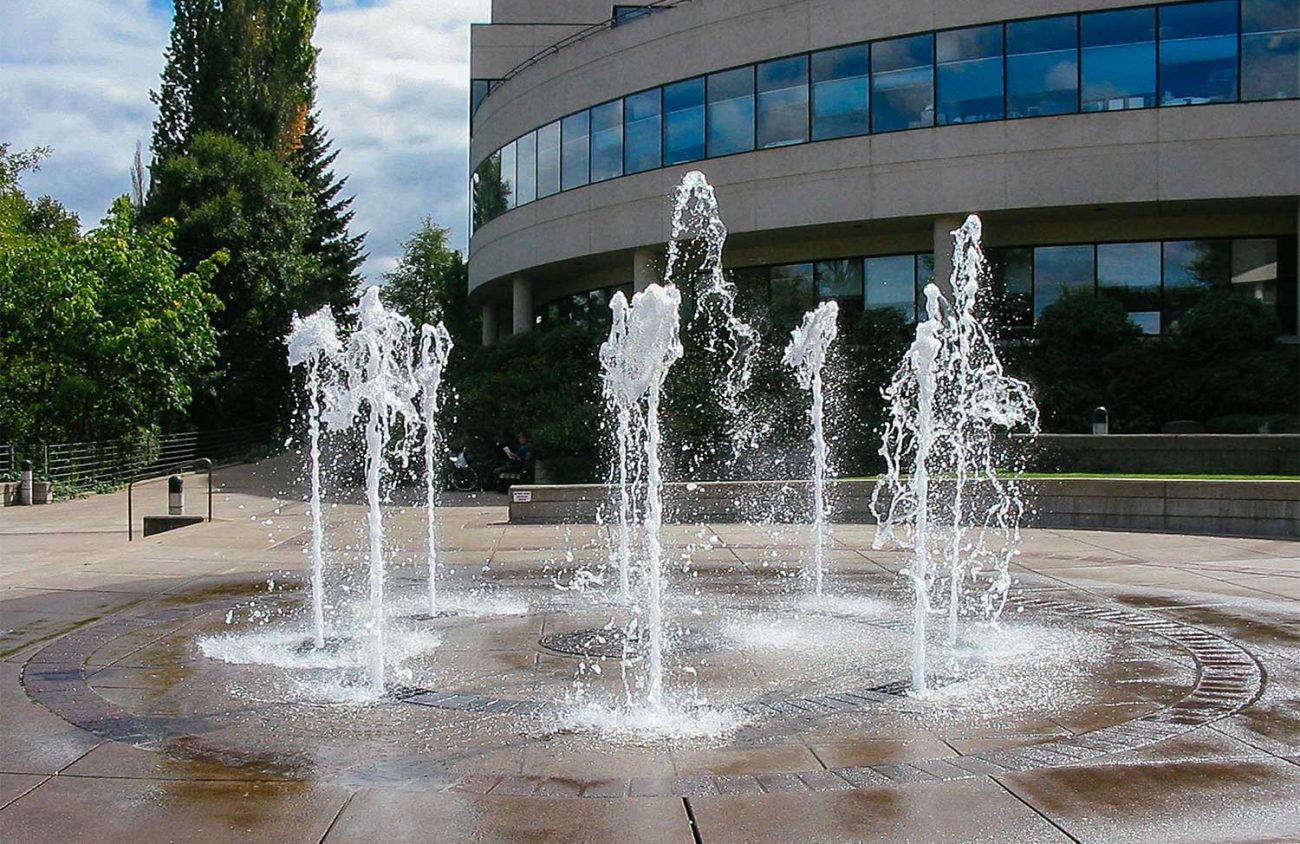A behind-the-scenes proposal to put a branch of the University of Oregon’s art museum on the riverfront in downtown Eugene has been shot down by UO leadership as too expensive, Eugene Weekly has learned.
The idea was brought to the Jordan Schnitzer Museum of Art’s Leadership Council in early November by Jill Hartz, the museum’s executive director.
Hartz’ proposal would mean moving major parts of Schnitzer museum operations — including its collection of Northwest art and its lucrative and popular Masterworks Program — to the modernist 101,000-square-foot Eugene Water and Electric Board headquarters on the Willamette River downtown.
As part of a plan to move its headquarters to its existing operations center on Roosevelt Boulevard, the EWEB board on Nov. 6 formally declared its riverfront headquarters to be surplus property. The city has first right of refusal to purchase the property but must make a bid by March 28.
Under Hartz’ leadership the JSMA has long been seeking a presence in downtown Eugene.
The existing campus museum, designed by Ellis Lawrence, opened in 1933 as a study center housing the Asian collection of Gertrude Bass Warner. Even after an extensive remodel was completed in 2005, the JSMA has remained fairly inaccessible to the public because it lacks nearby parking.
Eugene is one of the few cities of its size in the country that lacks an art museum, and art fans have worked for years to find a way to create a visual art center downtown. The Schnitzer doesn’t fill that role because it’s on campus, where parking is difficult.
Hartz declined comment on the proposal.
Eugene architect Otto Poticha, who was involved in the proposal, tells EW that turning the EWEB headquarters into an art museum would fit perfectly into the city’s vision of joining downtown and the riverfront.
The same could not be said of locating a new City Hall there, he adds, a plan favored by City Councilor Mike Clark.
Poticha joined Hartz and Kurt Neugebauer, the museum’s associate director of administration and exhibitions, for a tour of the EWEB building recently. Their uniform reaction was excitement, he says. “I think they designed this place as a museum and then stuck offices in it,” Poticha says. “It fits like a glove.”
Poticha — who designed, among other projects, the Wildish Community Theater in Springfield — says the EWEB building would require minimal changes to become an art museum. He would favor moving the main entrance to the fountain side of the building, to better connect with the river.
And its heating and air conditioning system would probably have to be modernized; art museums require careful climate control to protect delicate works in their collection.
Expanding the museum’s space would allow the Schnitzer to grow its popular Masterworks Program, under which it regularly exhibits masterpieces purchased by private collectors who gain a tax break by lending their works for public view. The museum makes nearly $1 million a year from the program, and with space downtown could show more works and attract more viewers, Poticha says.
Hartz and Neugebauer, he says, laid out the proposal at a meeting with the Leadership Council and initially received an enthusiastic go-ahead.
“They authorized the campus architect to go down there and make a deal,” he says.
The whole thing collapsed, Poticha says, when the campus architect, Michael Harwood, told a later meeting of the council that the cost of acquiring the building would be $20 million, Poticha says.
UO spokeswoman Molly Blancett confirmed broad outlines of the story but did not answer questions about details.
“While there have been some campus stakeholders who have expressed interest in the EWEB property, the university has decided that it is not something we will be pursuing,” she said by email.
Poticha disputes the $20 million cost estimate, which he calls unsubstantiated.
That would equal the cost of building a similar building today at $200 per square foot, he says, and notes that Councilor Clark has mentioned buying the building for the city for a lower price.
Harwood did not reply to a request for comment.
Poticha is discouraged by the outcome — especially if the property ends up being purchased by a private corporation. “We always do what’s second best in Eugene,” he says. “And that would be a second-best solution.”
UPDATE Nov. 15: The original story has been corrected to clarify that the board involved is the JSMA Leadership Council. UO President Michael Schill is not a member.
Further, JSMA executive director Jill Hartz said in an email Nov. 15 that University Architect Michael Harwood was never authorized to pursue purchase of the EWEB facility, as claimed by Otto Poticha. When EW reached out on Nov. 13 to UO spokeswoman Molly Blancett about the matter, she neither confirmed nor denied details of Harwood’s role as described by Poticha. Harwood himself never answered an email sent directly to him asking for details.
Update Nov. 16: The university now says the museum board never, in fact, considered the proposal at all. “The JSMA museum board never endorsed and then reject[ed] the idea,” she says in an email. “It was never discussed at the meeting.” She also now says that Hartz is correct that Harwood was never authorized to pursue the purchase of the property.
